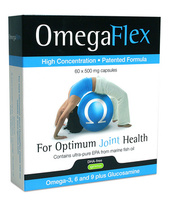J-Lo joins triathlon trend
 Anyone who has seen the photos of Jennifer Lopez taking part in an exhausting triathlon just seven months after the birth of her twins Max and Emme can't fail to be impressed. J-Lo swam a mile, cycled 18 miles and ran four miles in just two hours, 23 minutes at the event at Zuma Beach, Malibu, raising an amazing £70,000 for the Children's Hospital of Los Angeles for her efforts.
Anyone who has seen the photos of Jennifer Lopez taking part in an exhausting triathlon just seven months after the birth of her twins Max and Emme can't fail to be impressed. J-Lo swam a mile, cycled 18 miles and ran four miles in just two hours, 23 minutes at the event at Zuma Beach, Malibu, raising an amazing £70,000 for the Children's Hospital of Los Angeles for her efforts.As if that weren't enough, just hours later La Lopez appeared in fine red-carpet form at husband Marc Anthony's surprise birthday party in New York. It's enough to put the rest of us mere mortals to shame.
Triathlon is reportedly one of today's fastest-growing sports. The first triathlon event was held in the US in 1974. Then in 2000 it became an official Olympic sport at the Sydney games. Today, thousands of people take part in triathlons all over the world.
Jennifer is reported to have been inspired to take part in the triathlon while watching TV when she was eight months pregnant. She may well be feeling the after-effects now, however, including sore, aching muscles. But in the long-term events like the triathlon can put athletes at greater risk of developing osteoarthritis, a disease caused by wear and tear of the joints.
Leading sportspeople, including triathlon champions Dave Scott, who has won the Iron Man world triathlon championship no less than six times, and Chrissie Wellington, the first British athlete to win the Iron Man world triathlon championship in Hawaii, 2007, protect their joints against the damage all that training and competing causes by taking a natural supplement called OmegaFlex.
Joint boosting amino
The active ingredient in OmegaFlex is a substance called glucosamine. An amino sugar made naturally in the body from glucose, glucosamine makes up 50 percent of the lubricant found within the synovial fluid – the fluid that surrounds your joints – so it’s involved in protecting against joint wear and tear. It helps your body make collagen and maintain healthy connective tissues, all of which is needed for rebuilding and repairing cartilage.
Indeed, studies show that glucosamine may slow the progress of osteoarthritis as well as build new cartilage.
The glucosamine in OmegaFlex is the most bio-available (i.e. most easily absorbed) form, namely glucosamine hydrochloride. Until recently, most glucosamine supplements were derived from shellfish. The glucosamine hydrochloride in OmegaFlex, however, is derived from a vegetarian source.
OmegaFlex also contains eicosapentaenoic acid (EPA), an omega-3 fatty acid derived from ultra-pure marine fish oil. Studies suggest that omega-3 fatty acids may improve mineral density, while other experts believe they may help reduce the inflammation associated with arthritis.
OmegaFlex also contains GLA (gamma-linolenic acid, an omega-6 fatty acid) in the form of virgin evening primrose oil, which is thought to improve joint pain and tenderness; CLA – or conjugated linoleic acid – another omega-6 fatty acid believed to help relieve pressure on joints by reducing body fat; and virgin olive oil (oleic acid), an omega-9 fatty acid that may have anti-arthritic and anti-inflammatory properties.
OmegaFlex is available in 60-capsule packs, priced £12.95. Visit vegepa.com for more information.

